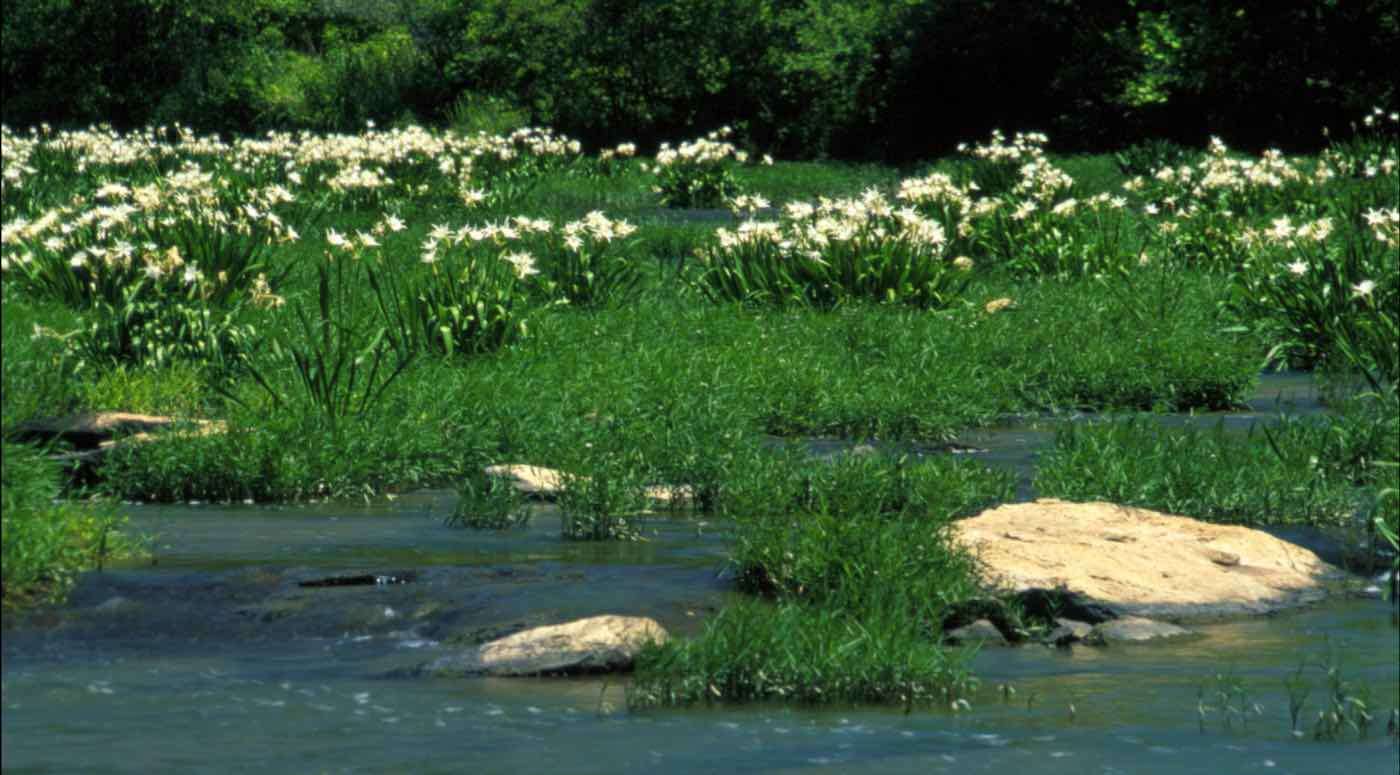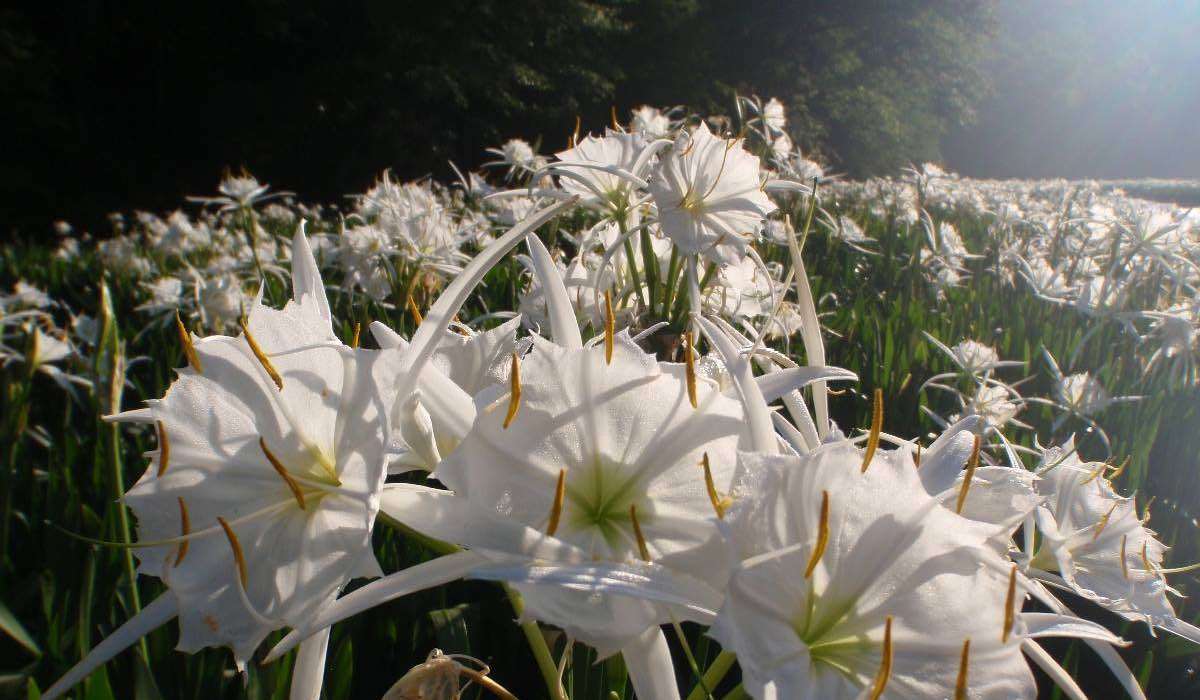San Francisco Will Consider Ending All Prosecution of Psychedelic Drug Use
The bill will hopefully reduce non-violent drug prosecution, and make it easier for health practitioners to utilize the therapeutic benefits.

Coal mining left a legacy of destroyed habitats and polluted waters down in the middle of Alabama, but thanks to the state's Abandoned Mine Land Reclamation program, a wildlife refuge is bringing back spectacular natural beauty—and thousands of tourists clamoring for photographs of a rare white lily.
When the state acquired the land 20 years ago, they also acquired a problem, says manager Steven Trull, who runs the Cahaba River National Wildlife Refuge. But he is seeing a transformation as swift as the river that he oversees.
"Being able to clean it up and stop the chemicals from going into the Cahaba River is a wonderful thing on so many levels."
The Cahaba River is an ecological marvel in a state whose rivers have been dammed up, dumped upon, and badly degraded. It flows from springs and seeps 190 miles to the Alabama River. Nearly three-fourths of the river is free-flowing, the longest stretch of unimpeded river in Alabama. Beyond Birmingham, the Cahaba runs through the rolling hills that mark the end of the Appalachian Mountains, with rocky shoals along the river's upper reaches, and barely any riverside development.
No other similarly sized river in North America is home to as many fish species as the Cahaba. Fifty of the continent's 300 types of mussels are found in the river, and roughly 10 percent of North America's gill-breathing freshwater snail species.
But it's the white Cahaba lily (or shoals spider-lily) that draws crowds of swooning nature lovers.
Rare, though not federally threatened or endangered yet, it is a flower that prompted 18th century naturalist William Bartram to gush that "nothing in vegetable nature was more pleasing."

The lilies, for which the Cahaba River was named, bloom each spring and draw crowds from as far away as Upstate New York and far-off Canada. The fragrant white lilies are short lived—each flower opens overnight and lasts for just one day—but the show of new flowers lasts 6-8 weeks.
By mid-June, the lilies have disappeared. And so too have most of the visitors, while the refuge returns to bucolic splendor to await next year's crop of camera-toting tourists.
The annual Cahaba Lily Festival attracted 1,000 carloads of enthusiasts this year, but Manager Trull envisions year-round recreation at the conservation preserve south of the cities of Birmingham and Tuscaloosa.
The perennial flower, Hymenocallis coronaria—which also grows in Georgia and the Carolinas—require swift-moving waters, rocky shoals, and a lot of sunlight, which is why the species is considered imperiled, due to all the dams built along its rivers.
The white flowers reach about 3 feet tall (0.9 m) and develop from a bulb that lodges in the cracks of rocky shoals. The gorgeous blooms are three inches wide with six petals and a nectar irresistible to pollinators.
Nine wastewater treatment plants use the Cahaba River between Birmingham and the refuge. Failing septic tanks, residential and industrial development, and agricultural runoff contribute to the water-quality woes. Wildlife officials also have to deal with the pollution from the abandoned mining operations—heavy metals, toxic chemicals, sedimentation.
Today, the refuge contains 5,000 acres for which the state has secured an additional $5 million in mine-reclamation money to continue cleaning up the mine's waste. And the refuge, with partners, will spend another $735,000 to reduce woody undergrowth, help prevent wildfires, and benefit the native plants and longleaf pines.
In 2021, the Service bought 1,164 acres of well-tended forest on the river's eastern bank. Fittingly, the $3.2 million spent for the property came from the Land and Water Conservation Fund which parlays revenues from offshore oil and gas leases into conservation and recreation projects.
"It's got hunting access, new trails, canoeing, kayaking, fishing, wildlife observation—all sorts of recreation opportunities for the community," Trull, a former miner himself, says.
A beaver pond below the now-sealed Piper mines remains contaminated by sulfuric acid runoff that leached out and washed downhill. A state agency has already capped the pits and cleaned up some of the toxic mess. Now, it'll clean up the rest and help restore the refuge to its natural state.
SHARE This Natural Resurrections On Social Media…
Be the first to comment